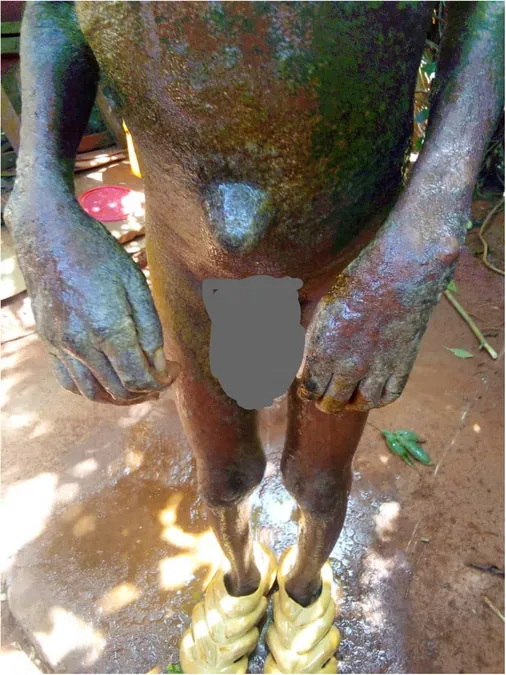
Shocking Case of Norwegian Scabies Uncovered at University of Nigeria Teaching Hospital
2025-05-19
Author: Jia
What is Norwegian Scabies?
Norwegian scabies, or crusted scabies, is a severe and rare form of skin infestation caused by the Sarcoptes scabiei var. hominis mite. Unlike typical scabies, which results in localized itching and a limited number of lesions, Norwegian scabies manifests as widespread crusted lesions, making diagnosis particularly challenging.
A Rare and Severe Case
At the University of Nigeria Teaching Hospital in Ituku-Ozalla, a 16-year-old male patient diagnosed with HIV presented with this alarming condition. Despite starting anti-retroviral therapy two years earlier, he struggled with adherence, leading to a painful eruption of crusted lesions covering his entire body.
Unveiling the Mystery
Initially mistaken for seborrheic hyperkeratosis, his case took a dramatic turn when skin scrapings revealed a live infestation of the scabies mite. The patient’s alarming CD4+ count of 54 cells/mm³ and a viral load of 604 copies/ml underscored the severity of his condition.
The Road to Recovery
In a coordinated effort involving a multidisciplinary team, the patient underwent a robust treatment regime. He was administered oral ivermectin, topical agents, and antibiotics to counteract secondary infections. Within just two weeks, remarkable progress was observed—the lesions began to clear, the debilitating pain subsided, and he left the hospital with a renewed sense of health.
Why This Matters
Norwegian scabies isn’t just a medical condition; it’s a warning signal. Its presentation in immunocompromised patients highlights the urgent need for awareness and prompt recognition of symptoms to prevent widespread outbreaks, especially in healthcare settings.
Conclusion: A Call to Action
This case sheds light on a rarely reported but serious condition in Nigeria. It emphasizes the necessity for healthcare providers to include Norwegian scabies in their differential diagnoses for patients with extensive skin lesions. Swift identification and comprehensive treatment strategies are critical in combatting this highly contagious and distressing condition.




 Brasil (PT)
Brasil (PT)
 Canada (EN)
Canada (EN)
 Chile (ES)
Chile (ES)
 Česko (CS)
Česko (CS)
 대한민국 (KO)
대한민국 (KO)
 España (ES)
España (ES)
 France (FR)
France (FR)
 Hong Kong (EN)
Hong Kong (EN)
 Italia (IT)
Italia (IT)
 日本 (JA)
日本 (JA)
 Magyarország (HU)
Magyarország (HU)
 Norge (NO)
Norge (NO)
 Polska (PL)
Polska (PL)
 Schweiz (DE)
Schweiz (DE)
 Singapore (EN)
Singapore (EN)
 Sverige (SV)
Sverige (SV)
 Suomi (FI)
Suomi (FI)
 Türkiye (TR)
Türkiye (TR)
 الإمارات العربية المتحدة (AR)
الإمارات العربية المتحدة (AR)